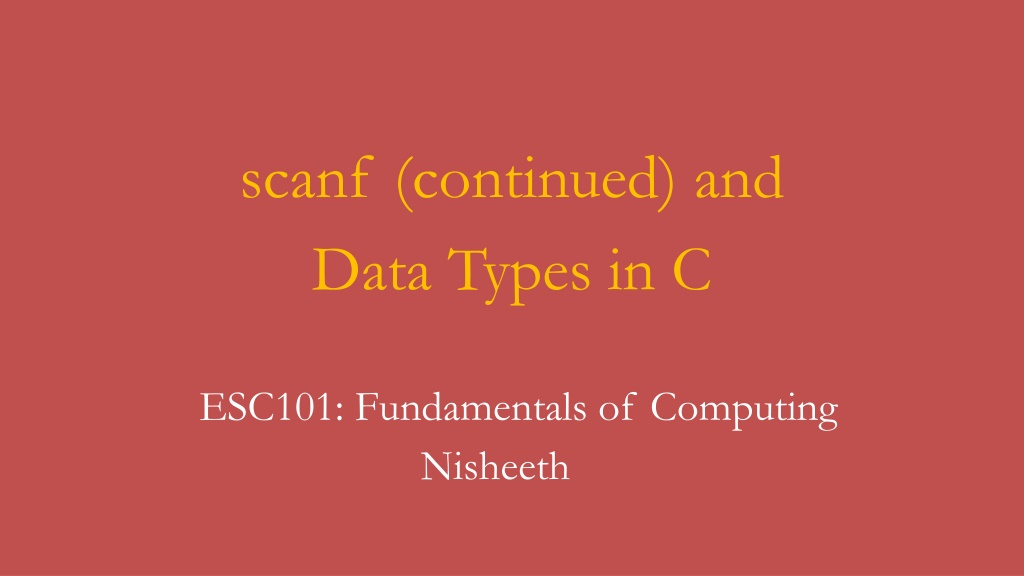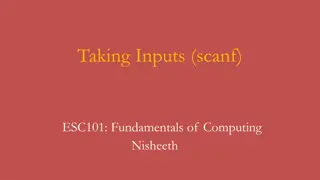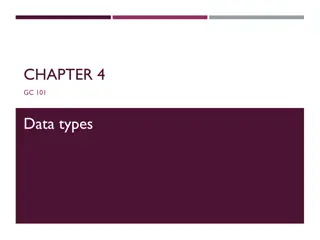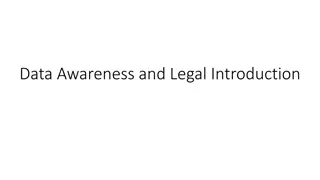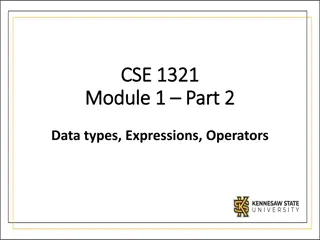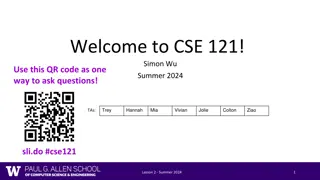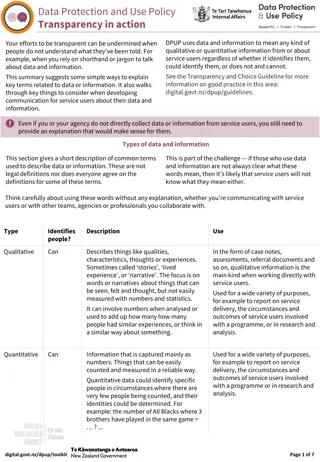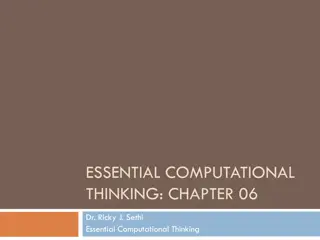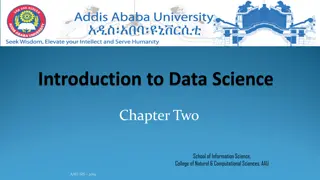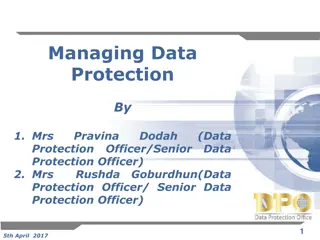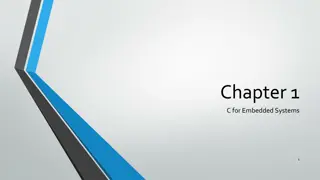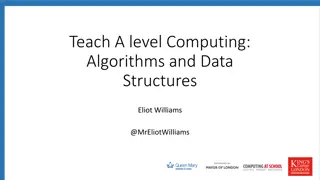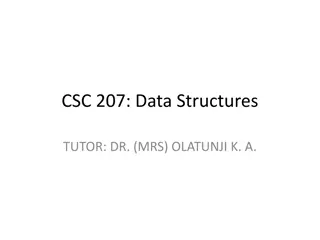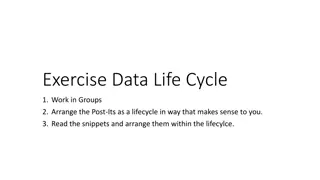Understanding scanf and Data Types in C
Learn how scanf works in C programming, how to communicate effectively with the compiler, handle whitespace characters, comment your code for better understanding, and utilize comments for problem-solving. Get insights into proper input handling with scanf, managing whitespace characters, and the importance of commenting in programming practices.
Download Presentation

Please find below an Image/Link to download the presentation.
The content on the website is provided AS IS for your information and personal use only. It may not be sold, licensed, or shared on other websites without obtaining consent from the author. Download presentation by click this link. If you encounter any issues during the download, it is possible that the publisher has removed the file from their server.
E N D
Presentation Transcript
scanf (continued) and Data Types in C ESC101: Fundamentals of Computing Nisheeth
How does scanf work ? HOW WE USUALLY SPEAK TO A HUMAN HOW WE MUST SPEAK TO MR. COMPILER Please read one integer. Ignore all whitespace (spaces,tabs,newlines) after that till I write another integer. Read that second integer too. Store value of the first integer in a and value of second integer in b. scanf( %d%d , &a, &b); Format string tells me how you will write things, and then I am told where to store what I have read Format string Remember Mr. C likes to be told beforehand what all we are going to ask him to do! Scanf follows this exact same rule while telling Mr. C how to read
How does scanf work ? Be a bit careful since Mr C is a bit careless in this matter He treats all whitespace characters the same when integers are being input scanf will never print anything scanf( Hello %d ,&a); My advice to you is to take input one at a time in the beginning Try out acrobatics in free time Hmm you are going to write the English word Hello followed by space followed by an integer. I will store the value of that integer in a Use printf to print and scanf to read Try out what happens with the following scanf( %d %d ,&a,&b); scanf( %dHello%d ,&a,&b); scanf( %d,%d ,&a,&b); scanf( %d\n%d ,&a,&b); scanf( %d\t%d ,&a,&b); scanf( \ %d%d\ ,&a,&b);
Commenting Very important programming practice int main(){ int a; // My first int int b; // The other int // Assign them values a = 5, b = 4; a + b; return 0; } int main(){ int a; /* My first int */ int b; /* The other int */ /* Assign them values */ a = 5, b = 4; a + b; return 0; } Just be a bit careful. Some compilers don t understand // comments int main(){ int a; // My first int int b; // The other int /* Assign them values */ a = 5, b = 4; a + b; return 0; } Yes. In fact /* */ is used to comment several lines at once shortcut! So I can mix and match? 4
More on Comments Use comments to describe why you defined each variable and what each step of your code is doing You will thank yourself for doing this when you are looking at your own code before the end sem exams Your team members in your company/research group will also thank you Multiline comments very handy. No need to write // on every line int main(){ int a; // My first int int b; // The other int /* Assign them values so that I can add them later on */ a = 5, b = 4; a + b; return 0; } 5
A Useful Tip While Problem-Solving Comments can be also used to identify where is error Mr C will tell you (compile) where he thinks the error is Commenting out lines can also help identify the error Error! Okay! Okay! int main(){ int a, b; c = a + b; a = 5; b = 4; return 0; } int main(){ int a, b; // c = a + b; a = 5; b = 4; return 0; } int main(){ int a, b, c; c = a + b; a = 5; b = 4; return 0; } Aha! I forgot to declare c 6
A Useful Tip While Solving Problems Print your solutions to each one of these pieces to see where going wrong Try breaking up the problem into smaller pieces I have no idea what is going wrong here! 7
A Useful Tip While Solving Problems Equals 0
A Useful Tip While Solving Problems Replace this part by (2*x*x*x)/3
Basic Data Types in C Int: %d specifier Integers like 156, -3, etc float (short form of floating point number ) and double: %f specifier Real numbers like 3.14, 2.0, -1.3, etc double is like float but has larger range char (short form of character ): %c specifier Single letter (a-z or A-Z), single digit, or single special character A char is always enclosed in inverted single commas Some examples: a , A , 2 , $ , = These basic data types can also be used with a modifier Modifiers change the normal behaviour of a data type (e.g., its range of values) and memory storage space required (more on next slides)
Type Modifiers in C signed (used with int, float/double, char) signed means the data type can have positive and negative values int, float/double, char are signed by default (no need to write signed ) unsigned (used with int, char) unsigned means the data type can have only take positive values short (used with int) short means it uses only half of the memory size of a normal int long (used with int) long means it uses twice the memory size of a normal int Can store a larger range of values of that type 11
Various C Data Types without/with Modifiers unsigned int %u long int (long) %ld int (signed int) %d short int (short) %d short unsigned %u long unsigned %lu Yes, multiple modifiers also allowed float %f double %lf long double %Lf char %c unsigned char %u 12
int Can store integers between -2,147,483,648 and 2,147,483,647 #include <stdio.h> int main(){ int a; scanf( %d , &a); printf( My first int %d , a); return 0; } Range: -2^31 to (2^31)-1 signed int uses 32 bits (4 bytes, 8 bits = 1 byte) on recent compilers) %d a Integer arithmetic applies to integers +, -, /, *, %, () Have worked with them a lot so far
Printing well-formatted outputs using printf When printing an int value, place a number between % and d (say %5d) which will specify number of columns to use for displaying that value Output 2345 2345 123 2345 int x = 2345, y=123; printf("%d\n",x); //Usual (and left aligned) printf("%6d\n",x); //Display using 6 columns (right aligned) printf("%6d\n",y); printf("%2d\n",x); //Less columns than digits, same as %d Note: So far, we have only seen how to print integers. We will see how to print other types of variables later today 14
long int (usually written just long) Really long can store integers between -9,223,372,036,854,775,808 and 9,223,372,036,854,775,807 Range: -2^63 to (2^63)-1 #include <stdio.h> int main(){ long a; //long int also scanf( %ld , &a); printf( My first long int %ld , a); return 0; } long int uses 64 bits on recent compilers a Integer arithmetic applies to long int as well +, -, /, *, %, () Try them out on Prutor How does long work with int int + long, int * long? Will see in next class %ld
float float uses 32 bits (4 bytes). Why this range for double? Will see reason later int, long allow us to store, do math formulae with integers float allows us to store, do math formulae with reals Very large range 3.4e+38 Arithmetic operations apply to float as well +, -, /, *, () Try them out on Prutor #include <stdio.h> int main(){ float a; scanf( %f , &a); printf( My first real %f , a); return 0; } a %f What happened to remainder %? I remember. Remainders make sense for integers, not for real numbers Did you ever do remainders with real numbers in school?
Too many decimal digits being printed. Can I just print one or two? printf revisit: Printing of float/double Correct! Value of a = 123.456700 Value of a = 123.46 Value of a = 1.234567e+02 Value of a = 1.23e+02 Both %f and %lf work for float and double For long double, %Lf needed Can use %e if want answer in exponential notation #include <stdio.h> int main(){ double a = 123.4567; printf( Value of a = %f , a); return 0; } Oh right. The usual rules of rounding apply here too. 1.5644 will become 1.56 if rounded to 2 places but 1.5654 will become 1.57 Yes. Use %0.2f to print 2 decimal places #include <stdio.h> int main(){ double a = 123.4567; printf( Value of a = %e , a); return 0; } Sure. Just like I did it for integer display. See next slide Great. So can you also help me control the format in which float/double is displayed on screen? %0.2f , a); %0.2e , a); Be careful, I am rounding while giving answer correct to 2 decimal places 123.4567 123.46 1.234567 1.23 17
printf revisit: Controlled printing of float/double Already saw how to use printf for well-formatted int display Can also control how to display a float/double using printf Can do it using %a.bf specifier where a and b are numbers Here a is the total field width (number of columns) in which the float will be displayed, b is the number of digits printed after decimal float pi = 3.141592; printf("%f\n",pi); //Usual Output 3.141592 3.14 3.1416 printf("%6.2f\n", pi); //2 decimal printf("%0.4f\n",pi); //4 decimal // Note rounding off! 18
double Double can also handle real numbers but very large ones Similar relation to float as long has to int Very large range 1.79e+308 Arithmetic operations apply to double as well +, -, /, *, () There is something called long double as well Use %Lf to work with long doubles Try these out on Prutor #include <stdio.h> int main(){ double a; scanf( %f , &a); printf( My first real %f , a); return 0; } a %lf works too!
char Basically, a char is a symbol Internally stored as an integer between -128 and 127 (if signed char) or between 0 and 255 (if unsigned char) Char constants enclosed in Integer arithmetic applies to char as well +, -, /, *, %, () Case sensitive a , A different Various usages (e.g., in arrays of characters strings), will see more later p #include <stdio.h> int main(){ char a = p ; printf( My first char %c\n , a); printf( ASCII value of %c is %d ,a,a); return 0; } %c a This Will print the ASCII value (integer) of this character
American Standard Code for Information Interchange \t \n Image courtesy wikipedia.org
ASCII Table with Extended Characters https://theasciicode.com.ar/
Mixing Types in C Expressions We can have C expression with variables/constants of several types Certain rules exist that decide the type of the final value computed Demotion and Promotion are two common rules int a = 2/3; // a will be 0 (no demotion/promotion) float a = 2/3; // a will be 0.0 (RHS is int with value 0, promoted to float with value 0.0) int a = 2/3.0; // a will be 0 (RHS is float with value 0.66, becomes int with value 0) float a = 2/3.0; // a will be 0.66 (RHS is float with value 0.66, no demotion/promotion) int a = 9/2; // a will be 4 (RHS is int with value 4, no demotion/promotion) float a = 9/2; // a will be 4.0 (RHS is int with value 4, becomes float with value 4.0) During demotion/promotion, the RHS value doesn t change, only the data type of the RHS value changes to the data type of LHS variable 23
Type Casting or Typecasting Also remember: When assigning values, I always compute the RHS first Converting values of one type to other. Example: int to float and float to int (also applies to other types) Conversion can be implicit or explicit. Typecasting is the explicit way Automatic (compiler) By us int k =5; float x = k; // good implicit conversion, x gets 5.0 float y = k/10; // poor implicit conversion, y gets 0.0 float z = ((float) k)/10; // Explicit conversion by typecasting, z gets 0.5 float z = k/10.0; // this works too (explicit without typecasting), z gets 0.5 24
Typecasting: An Example Program But be careful about which one you are typecasting Also, typecasting just one variable on RHS is enough #include <stdio.h> int main(){ int total = 100, marks = 50; float percentage; percentage = (marks/total)*100; printf("%.2f",percentage); return 0; } #include <stdio.h> int main(){ int total = 100, marks=50; float percentage; percentage = (float)marks/total*100; printf("%.2f",percentage); return 0; } Typecasting makes it 50.0/100 which equals 0.5 Several other ways also possible, e.g., proper bracketing. Equals 0 0.00 50.00 25
Typecasting is Nice. But Take Care.. #include <stdio.h> int main(){ float x; int y; x = 5.67; y = (int) x; // typecast (convert) float to int printf( %d ,y); return 0; } #include <stdio.h> int main(){ float x; int y; x = 1.0e50; // 10^50 y = (int) x; // typecast (convert) float to int printf( %d ,y); return 0; } Expected conversion -2147483648 5 No. 1.0e50 is too big to be cast as an int (or even long try yourself) Reverse typecasting error can happen too: Sometimes converting a smaller data type (say int) to larger data type (say float) can also give unexpected results (more on this later in the semester) Are you kidding? Unexpected! 26
